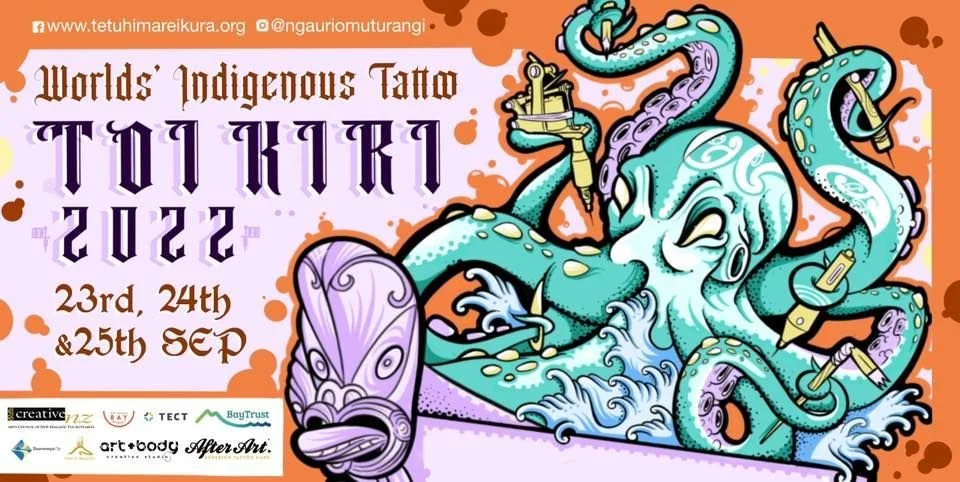Ko te timatamga o te whakaaronui,
ko te wehi ki ngaa Atua,
naa ratou nei ngaa mea katoa ...
JULIE PAAMA-PENGELLY 2022
HISTORIC PRACTICE
Julie began her artistic journey with taa moko in the early 1990s at which time she also began studies in Maaori Visual Arts and Third World Development. In 2004, Julie was commissioned - along with New Zealand’s foremost Taa moko artists - to perform her practice in full view of the public at Te Papa National Museum. Over the exhibition period, Julie tattooed full peha or puhoro on two women (covering the lower back, hips and thighs down to the knee).
It is work on which Julie is consistently challenged, through a belief that females traditionally never wore the peha, it being considered the mark of a warrior. Julie asserts there is documentary evidence women did indeed wear peha, and there must be little doubt that many modern-day women deserve the title of warrior!
ⓒ Norm Heke
SKINDIGENOUS EPISODE 7 – NEW ZEALAND
Exploring the world of indigenous tattoo, Skindigenous travel the globe in a 13-part documentary series to bring to the world the practitioners of art, techniques, tools, traditions and identity.
"Julie is a veteran in the revitalization of ta moko Maori tattooing. Her studio in Mount Maunganui mixes contemporary and traditional designs and cultivates artists from all walks of life.
Julie is one of the first women to practice in the male-dominated field. She is a strong voice for Maori women’s rights and continues to break down barriers to give women a place in ta moko and in the arts."
Tihoti Matauteute Barff Faara and Maxine Bluett, Moko Village, Matariki, Te Papa Tongarewa 2010
Focus Magazine Issue 6
July 27 2017 pages 55-57
“The whakapapa of moko links us back to our Polynesian forefathers and maintaining those links is crucial to further understandings of Taa moko””
World Atlas of Tattoo
2015 Anna Felcitiy Friedman
A lavishly illustrated global exploration of the vast array of styles and most significant practitioners of tattoo from ancient times to today
Tattoo art and practice has seen radical changes in the 21st century, as its popularity has exploded. An expanding number of tattoo artists have been mining the past for lost traditions and innovating with new technology. An enormous diversity of styles, genres, and techniques has emerged, ranging from geometric blackwork to vibrant, painterly styles, and from hand-tattooed works to machine-produced designs.
With over 700 stunning color illustrations, this volume considers historical and contemporary tattoo practices in Europe, the Americas, the Middle East, North and Sub-Saharan Africa, Asia, Australia, and the Pacific Islands. Each section, dedicated to a specific geographic region, features fascinating text by tattoo experts that explores the history and traditions native to that area as well as current styles and trends. The World Atlas of Tattoo also tracks the movement of styles from their indigenous settings to diasporic communities, where they have often been transformed into creative, multicultural, hybrid designs. The work of 100 notable artists from around the globe is showcased in this definitive reference on a widespread and intriguing art practice.
The Polynesian Tattoo Today by Tricia Allen
2010 Back cover features Moko Puhoro by Julie Paama-Pengelly
‘Maaori Art and Design’
is apparently the first book to present a comprehensive art language for Maaori visual culture. It traces the evolution of historic Maaori art and design, across the full range of disciplines: weaving, painting, carving and architecture. Julie Paama-Pengelly has produced a valuable resource to interpret historic Maaori art, now being recognised as a dynamic and credible mainstream visual culture, integral to both New Zealand and the international art scene.
Art + Body Creative Studio
Visit Julie’s studio in Mount Maunganui



















